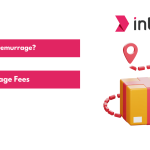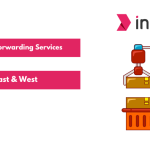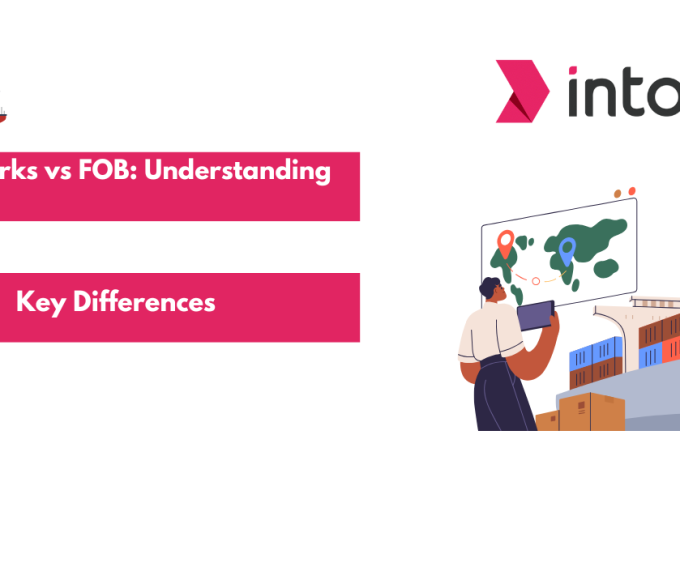Understanding shipping terms is paramount to ensuring efficient and effective transactions in international trade. The International Chamber of Commerce (ICC) established the abbreviation Incoterms ( International Commercial Terms), a set of standardized shipping terms.
Incoterms state the responsibilities of buyers and sellers of shipping goods, including those who bear the costs, risks, and responsibilities associated with the cargo.
Incoterms serve as a universal language in international trade, clearly delineating the obligations of parties involved in shipping goods. They are updated once every ten years. The most commonly used Incoterms are DAP (Delivered at Place) and DDP (Delivered Duty Paid).
DAP and DDP simplify complex shipping arrangements by specifying the extent of the seller’s responsibilities, making them indispensable for businesses that seamlessly navigate the complexities of international trade.
This article will discuss how DAP is different from DPP and other considerations such as buyer and seller responsibilities, cost-effectiveness, and best practices for both the incoterms.
By understanding these key Incoterms, you can make informed decisions that enhance your trade efficiency and reduce potential conflicts in your international shipping operations.
What is DAP?
DAP (Delivered at Place) is an Incoterm used in international trade to specify that the seller (the party responsible for shipping the goods) delivers the goods to a designated location agreed upon by the buyer and seller. The seller bears responsibilities and risks until the goods are delivered to the specified place. Once the goods reach this point, the risk and responsibility shift to the buyer.
Seller’s Responsibilities Under DAP
- Proper Packaging: Ensuring the goods are securely packaged to withstand the journey.
- Documentation: Providing all necessary shipping and commercial documentation, including the bill of lading, invoice, and packing list.
- Freight Charges: Covering all transportation costs up to the agreed delivery point.
- Risk Management: Assuming the responsibility for product loss or damage until they arrive at the designated location.
Buyer’s Responsibilities Under DAP
- Unloading of Cargo: Managing the unloading of goods from the arriving transport at the delivery point.
- Customs Clearance: Handling import customs clearance, including obtaining the necessary permits and documentation.
- Payment of Import Duties and Taxes: Bearing the costs of import duties, taxes, and any additional fees required to bring the goods into the country.
- Further Transport: If necessary, arrange and pay for further transport from the delivery point to the final destination.
What is DDP?
DDP (Delivered Duty Paid) is an Incoterm used in international trade when the seller delivers items to the buyer’s designated location. It includes all costs and risks associated with transportation, import/export duties, customs clearance, and taxes. The seller ensures the goods are delivered ready for unloading at the destination.
Seller’s Responsibilities in DDP
- Transportation Risks and Charges: The seller arranges and pays for all transportation costs from the point of origin to the buyer’s designated location.
- Import/Export Duties: The seller pays all import and export duties and ensures the goods meet all customs requirements.
- Customs Clearance: The seller handles all aspects of customs clearance, both for export in the seller’s country and import in the buyer’s country.
- Taxes: The seller covers applicable taxes, such as VAT or sales tax, ensuring the goods are delivered duty paid.
- Documentation: The seller provides all necessary documentation, including shipping documents, customs forms, and proof of payment of duties and taxes.
- Risk Management: The seller assumes all risks associated with the goods until they reach the buyer’s specified location and are ready for unloading.
Buyer’s Responsibilities Under DDP
The buyer is relieved from many responsibilities under Delivery Duty Paid. It includes two responsibilities:
- Unloading of Shipment: The buyer is responsible for arranging and covering the cost of unloading the products after delivery.
- Final Destination: Once the goods are unloaded, the buyer takes responsibility for transporting them to the final destination if it differs from the initial delivery point.
DAP vs DDP: Major Differences
Along with the significant differences, this table also concludes the key advantages and disadvantages of DAP and DDP, aiding in making an informed decision based on specific business requirements.
| Parameter | DAP (Delivered at Place) | DDP (Delivered Duty Paid) |
| Responsibilities and Risks | The seller is responsible until the goods reach the designated place. Buyer assumes risk upon delivery, responsible for unloading, customs clearance, duties, and taxes. | The seller covers all costs and risks until the goods are delivered and ready for unloading at the buyer’s location. Whereas the buyer is only responsible for unloading. |
| Impact on Costs | The seller is only responsible for transport to the delivery point. The buyer pays for customs duties, taxes, and any additional fees. | The seller covers overall costs, including transportation, duties, taxes, and customs clearance.The buyer mainly covers unloading costs. |
| Control Over the Shipping Process | The seller controls the shipping process until delivery at the specified place.Buyer controls customs clearance and final delivery. | The seller controls the entire shipping process, including customs clearance.Buyer mainly focuses on unloading. |
Summary:
Under DAP, buyers benefit from greater control over customs clearance and final delivery, which can lead to cost savings by selecting cheaper local services. Additionally, DAP provides flexibility in handling import procedures.
However, buyers are responsible for paying import duties and taxes and bear the risks associated with customs clearance, including potential delays and additional fees.
Conversely, DDP (Delivered Duty Paid) simplifies the buyer process by having the seller handle all aspects of customs clearance and covering all costs, including duties and taxes. This can significantly reduce hassle and complexity for the buyer.
The downside for sellers is the higher costs incurred due to covering all expenses. Moreover, due to customs verification issues, sellers may need more time to avoid complications and increased costs.
DAP vs DDP: Which One Should Be Considered?
When it comes to DAP vs. DDP, consider factors such as cost, control over the shipping process, familiarity with customs procedures, and the value of goods. DAP offers more control to buyers over customs clearance and related costs, while DDP provides a hassle-free experience for the buyer, with the seller handling all logistical and regulatory aspects.
Considerations Based on Business Needs
1. Speed
- DAP: The buyer handles customs clearance, which can be faster if they have an efficient process.
- DDP: The seller manages all aspects, including customs clearance, which can streamline the delivery process if the seller is experienced in handling such procedures.
2. Cost-Effectiveness
- DAP: Generally more cost-effective for the seller as they do not cover import duties, taxes, or unloading costs. However, the buyer should be prepared to handle these additional expenses.
- DDP: The seller covers all costs, including duties and taxes, leading to higher expenses for the seller. DDP can be beneficial for buyers who prefer an all-inclusive price.
3. Operational Control
- DAP: Offers buyers more control over customs clearance and last-mile logistics, allowing them to use their preferred customs brokers and logistics providers.
- DDP: The seller controls the entire shipping process, including customs clearance. This can reduce the buyer’s involvement and potential hassles.
4. Customs Clearance Complexities
- DAP: Ideal for buyers familiar with the destination country’s import procedures and local regulations. Buyers must handle customs clearance and related documentation.
- DDP: Best for buyers who prefer to avoid the complexities of customs clearance. The seller assumes responsibility for clearing the goods through customs and pays any associated duties and taxes.
Practical Considerations and Best Practices for DAP and DDP Transactions
1. Navigating Customs Clearance and Duties Efficiently
- Research and Preparation: Both buyers and sellers should thoroughly research the customs regulations and duties applicable in the destination country. Understanding these rules helps in preparing the necessary documentation and anticipating potential issues.
- Engage Experienced Customs Brokers: Working with an experienced customs broker can greatly streamline the clearance process. These professionals are well-versed in local regulations and can facilitate smoother, faster clearance.
- Pre-Clearance if Possible: Some countries offer pre-clearance programs that expedite customs. Check if this option is available and beneficial for your shipment.
2. Avoiding Common Mistakes: Inadequate Documentation and Underestimating Charges
- Detailed Documentation: Incomplete or inaccurate documentation can lead to significant delays and fines. Always double-check documents for completeness and accuracy before submission.
- Understanding All Costs: Underestimating customs duties, taxes, and other charges can lead to unexpected expenses. Sellers should provide clear and detailed cost estimates, and buyers should be aware of all potential charges.
- Clear Communication: Ensure open lines of communication between all parties involved, including buyers, sellers, customs brokers, and shipping carriers. It helps address issues promptly and keeps the shipment process on track.
3. Conducting Compliance Audits and Cost Calculation
- Regular Compliance Audits: Conduct regular audits to ensure compliance with all documentation requirements and customs regulations. Additionally, staying up-to-date with regulatory changes is also crucial.
- Accurate Cost Calculations: Use comprehensive cost calculation methods that include all possible expenses, such as shipping fees, duties, taxes, and handling charges. Accurate cost calculations help set realistic budgets and avoid financial surprises.
By following these practical considerations and best practices, buyers and sellers can more efficiently navigate the complexities of DAP and DDP transactions, ensuring smooth operations and minimizing risks and costs.
The Bottom Line
Making an informed choice regarding DAP vs DDP depends on your trade’s specific needs, such as the level of control desired, cost considerations, and familiarity with customs procedures. Both parties must carefully evaluate these factors to ensure smooth and efficient transactions.
You should engage in ongoing learning and consult with shipping experts to stay informed on the latest regulations and practices in international shipping.
For tailored advice and expert assistance, consider contacting Intoglo. Professionals there can help you navigate the complexities of global trade and optimize your shipping strategies.









Leave a comment